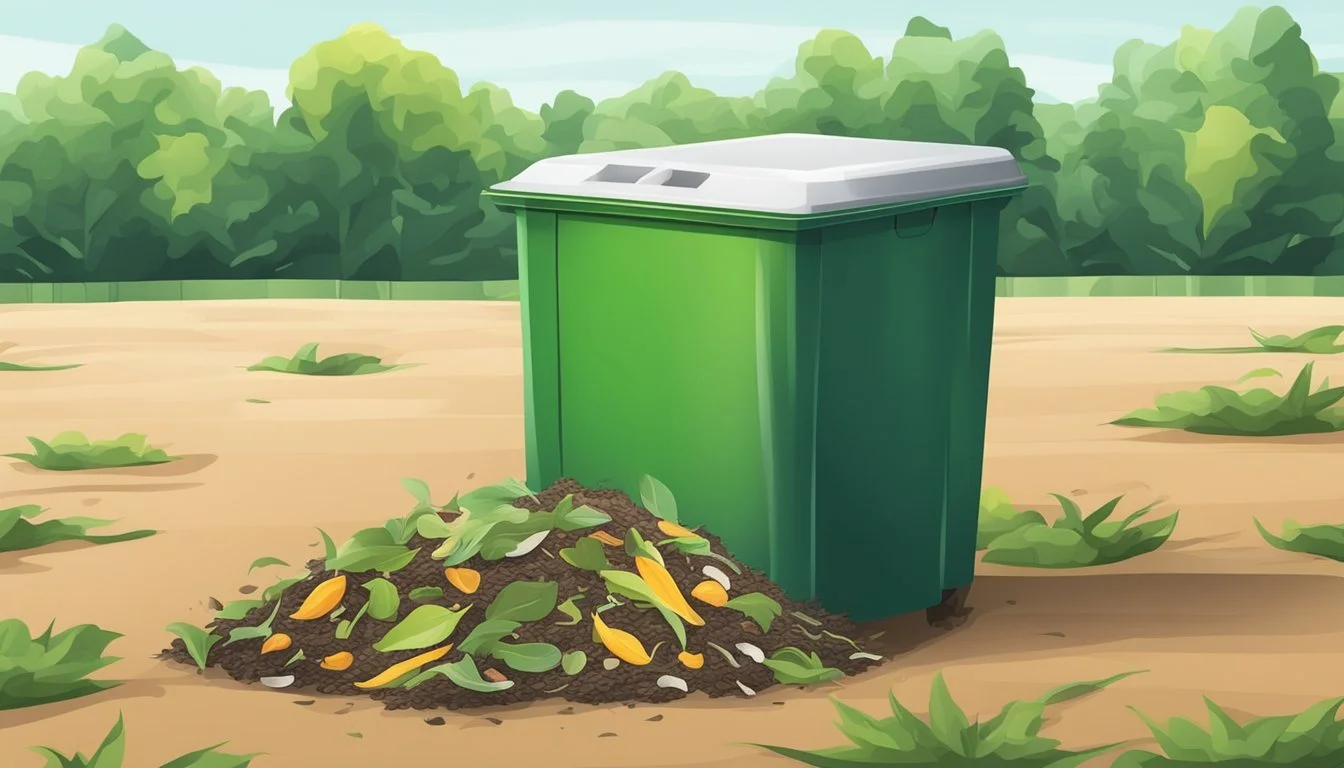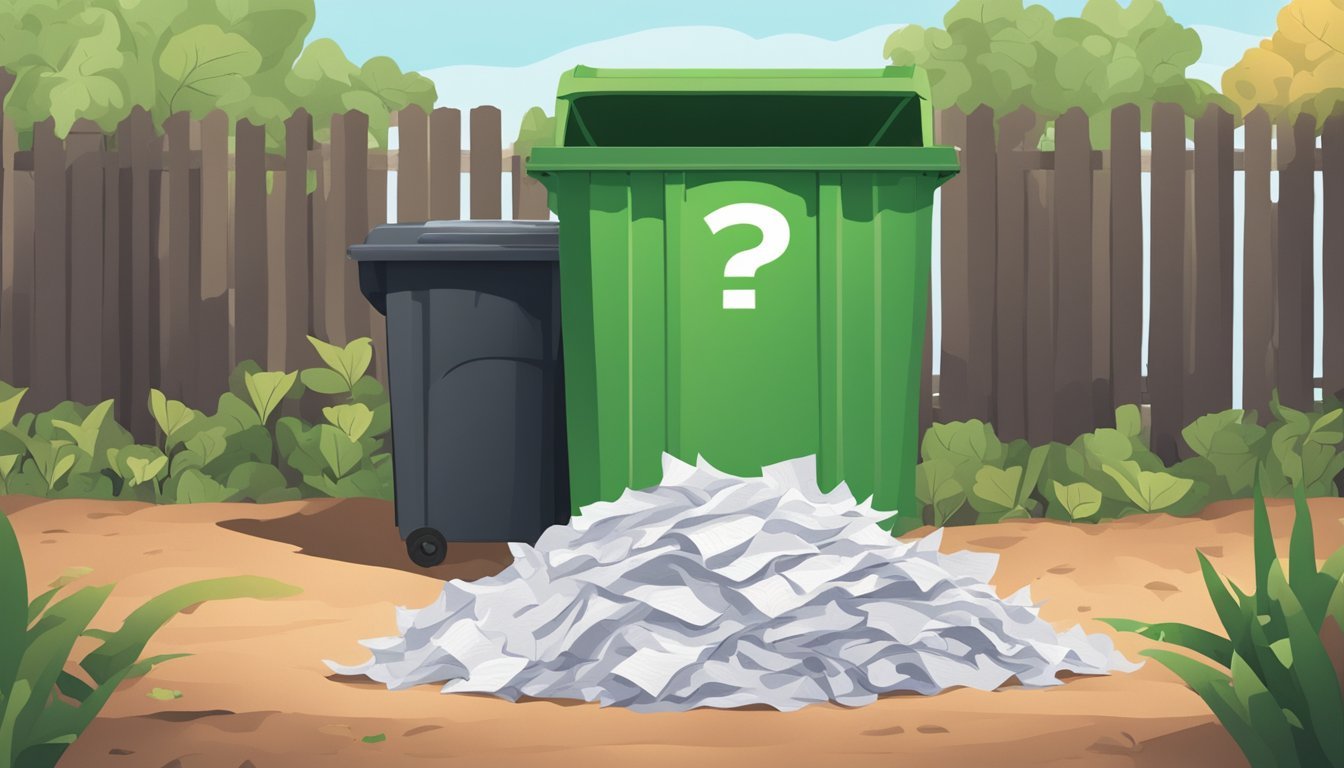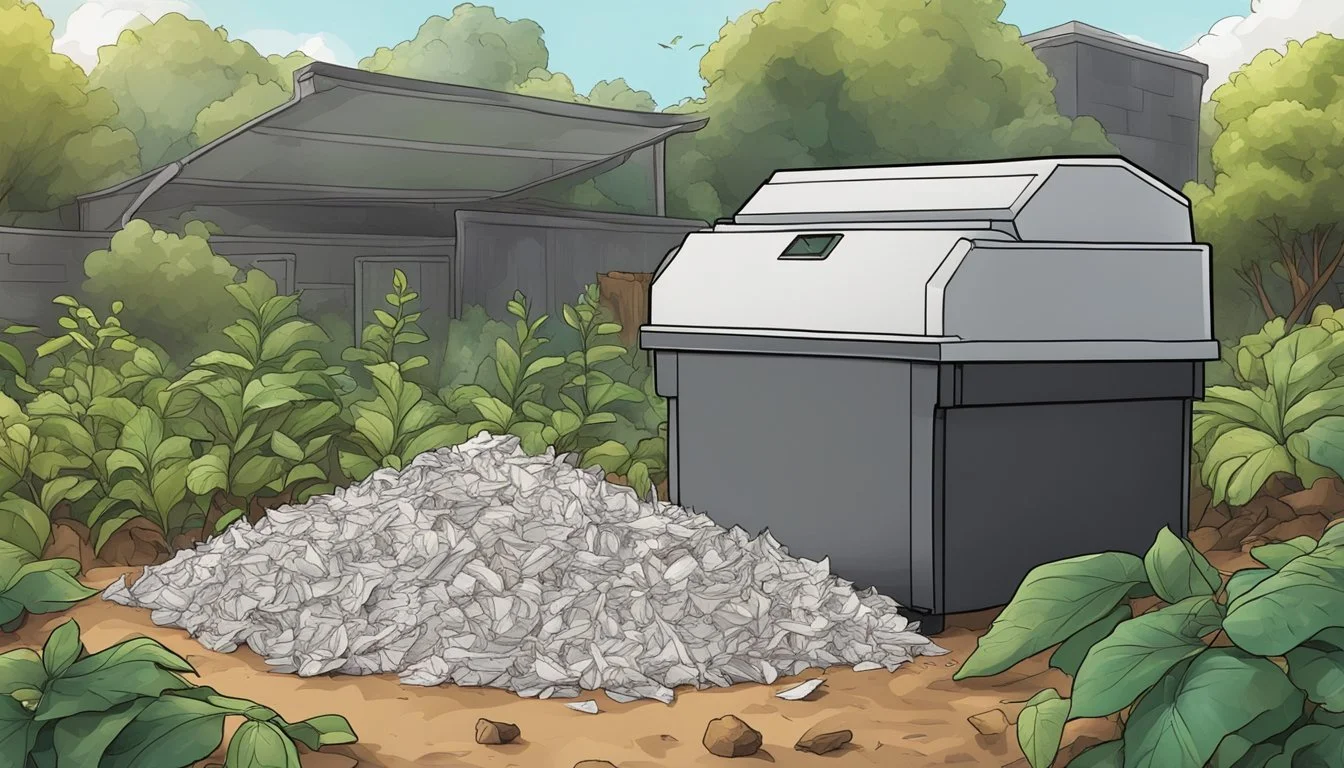Can You Compost Inkjet Paper?
Unveiling the Truth About Paper Recycling
In the realm of eco-friendly practices, composting stands out as an excellent method of recycling organic waste, enriching soil, and reducing the need for chemical fertilizers. Given the mounting concern over environmental sustainability, recognizing what can and cannot be composted is pivotal. When it comes to paper, a ubiquitous component of daily life, many environmentally conscious individuals question whether inkjet paper, a common office material printed with inkjet printers, can be introduced into their compost bins.
Inkjet paper, specifically, raises concerns due to the ink used in the printing process. While composting plain paper may be straightforward, the complexities of inkjet paper involve considering the potential for chemicals within the ink to disrupt the composting process. The debate revolves around whether these inks introduce harmful substances into the compost, which could subsequently affect the soil and plants. On the one hand, there is a push towards recycling inkjet paper through traditional municipal recycling programs to avoid contaminating compost heaps, while on the other hand, there’s an exploration of whether certain inks are safe enough to break down organically without negative impacts.
Although composting is a beneficial activity, caution is advised to ensure that the materials added, such as inkjet paper, contribute positively to the environmental cycle. It is a delicate balance between trying to minimize landfill waste and ensuring that composting efforts nurture rather than harm the ecosystem. With careful examination of the types of inks used on paper and their compostability, individuals can make informed decisions that align with eco-friendly practices.
Overview of Composting
Within the composting process, organic materials are transformed into a nutrient-rich soil amendment through the critical roles of microorganisms, moisture, and a balance of carbon and nitrogen.
What Is Composting?
Composting is the natural process of recycling decomposed organic materials into a rich soil known as compost. Microorganisms, such as bacteria and fungi, break down these materials in the presence of oxygen and moisture. The key elements for successful composting include organic materials like leaves, fruit scraps, and paper, microorganisms, decomposition, and the right mix of carbon (browns) and nitrogen (greens). The end product is added to soil to improve its quality and to help plants grow.
Compost components:
Greens/Nitrogen-rich materials: Food scraps, grass clippings.
Browns/Carbon-rich materials: Dead leaves, branches, uncoated paper.
Microorganisms: Bacteria, fungi, and insects.
Moisture: Essential for microbial activity.
Oxygen: Provided by turning the compost pile.
Benefits of Composting
Composting offers numerous environmental benefits, including reducing landfill waste by recycling organic materials back into the soil. It enhances soil structure, promotes soil fertility, and supports plant growth. Compost acts as a natural fertilizer, loaded with essential nutrients for plants and helps in retaining soil moisture. It can also reduce the need for chemical fertilizers, thus preventing the contamination of waterways.
Environmental benefits:
Reduces waste in landfills.
Cuts down methane emissions from landfills.
Soil benefits:
Improves soil structure.
Increases nutrient content.
Plant benefits:
Provides a nutrient-rich, natural fertilizer.
Aids in moisture retention in soil.
Compostability of Paper Products
The breakdown of paper products through composting is an essential step in recycling organic waste effectively. This section explores the various facets of how and why certain paper products can be included in composting efforts.
Paper Products in Compost
Paper serves as an input of carbon-rich "brown" materials in a compost pile, complementing the nitrogen-rich "green" materials like food waste and grass clippings. Items like newspapers, cardboard, and non-glossy paper are typically considered compostable. They should ideally be shredded to accelerate the decomposition process. However, one should exercise caution with glossy paper and certain white papers, which may contain inks or coatings not suitable for composting.
Role of Paper in the Composting Process
Composting paper aids in maintaining the necessary balance between brown and green materials. Shredded paper products help to create air pockets, which facilitate airflow and improve the composting process. By adding recycled paper into the mix, individuals contribute to an eco-friendly cycle, reducing waste while producing nutrient-rich compost.
Distinguishing Compostable and Non-compostable Paper
Not all paper products are fit for composting. Recycling paper involves discerning which papers are treated with chemicals or dyes. Compostable paper is typically uncoated and not brightly colored, and it includes items like plain cardboard and newspaper. Conversely, non-compostable paper often involves glossy finishes, heavy inks, or plastic coatings. To recycle these materials responsibly, they should be diverted to proper recycling channels rather than introduced into compost systems.
Potential Issues with Inkjet Paper
Inkjet paper, due to its specific manufacturing process, presents certain challenges when it comes to composting. These challenges are primarily due to the chemicals in the inks and coatings, as well as the environmental implications of adding this type of paper to compost.
Chemicals in Inks and Coatings
Inkjet paper often contains PLA (polylactic acid), which is a plastic derivative used in the coating to enhance print quality. The inks used in inkjet printers may contain a range of chemicals, such as dyes and toxins, that can be harmful if released into the environment. Additionally, the coatings on some inkjet papers may include substances that impede the breakdown of the paper during the composting process.
Toxins in inks can include: Heavy metals, volatile organic compounds (VOCs), and other harmful substances.
Coatings may contain: Plasticizers, UV inhibitors, or chlorine from the bleaching process.
Environmental Impact of Inkjet Paper Waste
When inkjet paper is not composted or recycled, it becomes part of landfill waste. The ecological footprint of inkjet paper waste is significant because it not only takes up space but can also leach toxins into the soil and waterways, creating a negative environmental impact.
Chlorine and other chemicals used in processing may lead to the formation of dioxins, which are highly toxic.
Plastic coatings prevent the paper from decomposing naturally, leading to longer-term landfill presence.
Composting Inkjet Paper Safely
To compost paper from inkjet printers safely, it is essential to understand the composition of the paper and ink used. While inkjet paper can be composted, certain precautions must be taken to minimize the release of harmful substances.
Prefer paper with non-toxic, soy-based, or water-based inks that have a lower environmental impact.
Remove any glossy coatings that might contain plastics or other non-biodegradable elements before composting.
Shred the paper to aid in the breakdown process and ensure thorough mixing within the compost pile to encourage the degradation of any remaining chemicals.
Composting Best Practices
To successfully compost inkjet paper, it's essential to apply effective shredding and mixing techniques, maintain a balanced compost pile, and utilize strategies that accelerate decomposition.
Proper Shredding and Mixing Techniques
Shredded inkjet paper is more compostable than whole sheets, as shredding increases the surface area exposed to microbial activity. Shredding the paper to a small size ensures quicker integration into the compost. When mixing inkjet paper into the pile, it should be evenly spread to prevent clumping and ensure that moisture can penetrate the paper, which is crucial for decomposition.
Maintaining Balance in the Compost Pile
A compost pile requires a balanced mix of carbon-rich "brown material" and nitrogen-rich "green material". Inkjet paper is considered a brown material and should be paired with green materials, such as fruit scraps or grass clippings, to maintain an optimal carbon-to-nitrogen ratio. Moisture and temperature are key— the pile should be moist but not waterlogged, and a warm temperature should be sustained to facilitate the breakdown of materials.
Compost Component Role in Compost Pile Brown Material Provides carbon Green Material Provides nitrogen Moisture Aids in decomposition Temperature Speeds up microbial activity
Accelerating Decomposition
Methods to enhance the decomposition of inkjet paper involve turning the pile regularly to introduce oxygen which supports the growth of beneficial microbes. Microbial activity is the driving force behind composting and is accelerated by the aforementioned balance of materials as well as consistent turning. The proper temperature inside the pile should be achieved and maintained to ensure the composting process proceeds efficiently.
Alternatives to Composting Inkjet Paper
When composting inkjet paper isn't an option, it is imperative to consider other environmentally responsible methods to handle this waste. Both recycling and reducing paper usage offer viable alternatives to manage the environmental impact of inkjet paper disposal.
Recycling Inkjet Paper
Recycling is a process that converts waste materials into new products to prevent waste of potentially useful materials. Inkjet paper, once used, can often be recycled to produce new paper products. When recycling inkjet paper, one should ensure that the paper is free from contaminants that could hinder the recycling process, such as adhesives or plastic coatings. Most curbside recycling programs accept inkjet paper, but it is always wise to check the specific recycling guidelines of one's local municipality.
To maximize efficiency and support the recycling industry, consumers might:
Sort their paper waste: separating inkjet paper from other types of paper can increase the quality of the recycled material.
Flatten and stack: this helps reduce space and makes transportation more efficient.
Reducing Paper Waste
The most effective method to minimize the environmental footprint of inkjet paper is to reduce paper use in the first place. Implementing paper-saving practices can significantly diminish the volume of waste needing recycling or composting. Strategies for reducing paper waste include:
Digital documents: Opting for digital versions of documents whenever possible will directly reduce the amount of inkjet paper used.
Double-sided printing: When printing is necessary, using both sides of the inkjet paper can halve the amount of paper required.
Reuse and repurpose: Lightly used inkjet paper can be reused for notes or drafts, extending its life before recycling.
By focusing on recycling and reducing waste, individuals and organizations can ensure that their use of inkjet paper is as sustainable as possible.
Legislation and Regulations
Legislative bodies have enacted various regulations that affect both the recycling and composting of materials, including inkjet paper. These laws ensure safe and sustainable environmental practices.
Recycling and Compost Policies
In the United States, legal frameworks such as the Federal Recycling and Composting Accountability Act aim to sharpen federal focus on the infrastructure for recycling and composting. Recycling regulations often categorize inkjet paper under recoverable materials, suggesting that proper channels should divert it from landfills to recycling or composting facilities where applicable.
Influence on Composting Practices
Government policies may impact which materials are deemed suitable for composting based on compost standards. For instance, ink types used on paper can determine whether inkjet paper is accepted in compost bins. Vegetable-based or soy-based inks are generally considered safe for composting under such standards. In contrast, inkjet paper with heavy metals or other potentially toxic inks might not meet these composting criteria and thus should be directed towards recycling routes instead.
Conclusion
Composting inkjet paper is a viable practice within conscientious waste management and contributes to environmental sustainability. However, it requires awareness of specific components in the paper. Inkjet paper with standard, water-soluble ink is generally safe for composting as it breaks down without substantial environmental harm.
Key Considerations:
Ink Types: Some inks may contain heavy metals or toxic substances. If the inkjet paper has such inks, recycling is recommended over composting.
Paper Coating: Glossy or heavily coated inkjet papers are less suitable for composting due to their potential barrier to decomposition and potential chemical additives.
Environmental Aspect: Composting suitable inkjet paper provides the benefit of reducing landfill waste and adds beneficial carbon-rich material to compost.
For optimal composting outcomes:
Shred paper into small pieces to accelerate breakdown.
Balance with green compost materials (nitrogen sources) to maintain a healthy composting mix.
Monitor the compost pile for signs of proper decomposition, adjusting as necessary.
In conclusion, individuals can contribute to a greener planet by discerning which types of inkjet paper enhance compost without environmental detriment.







